We've rounded up our favorite cleaning hacks to give you some inspiration when you're in a pinch and need some emergency help.

Our Greatest Cleaning Hacks Of All Time!

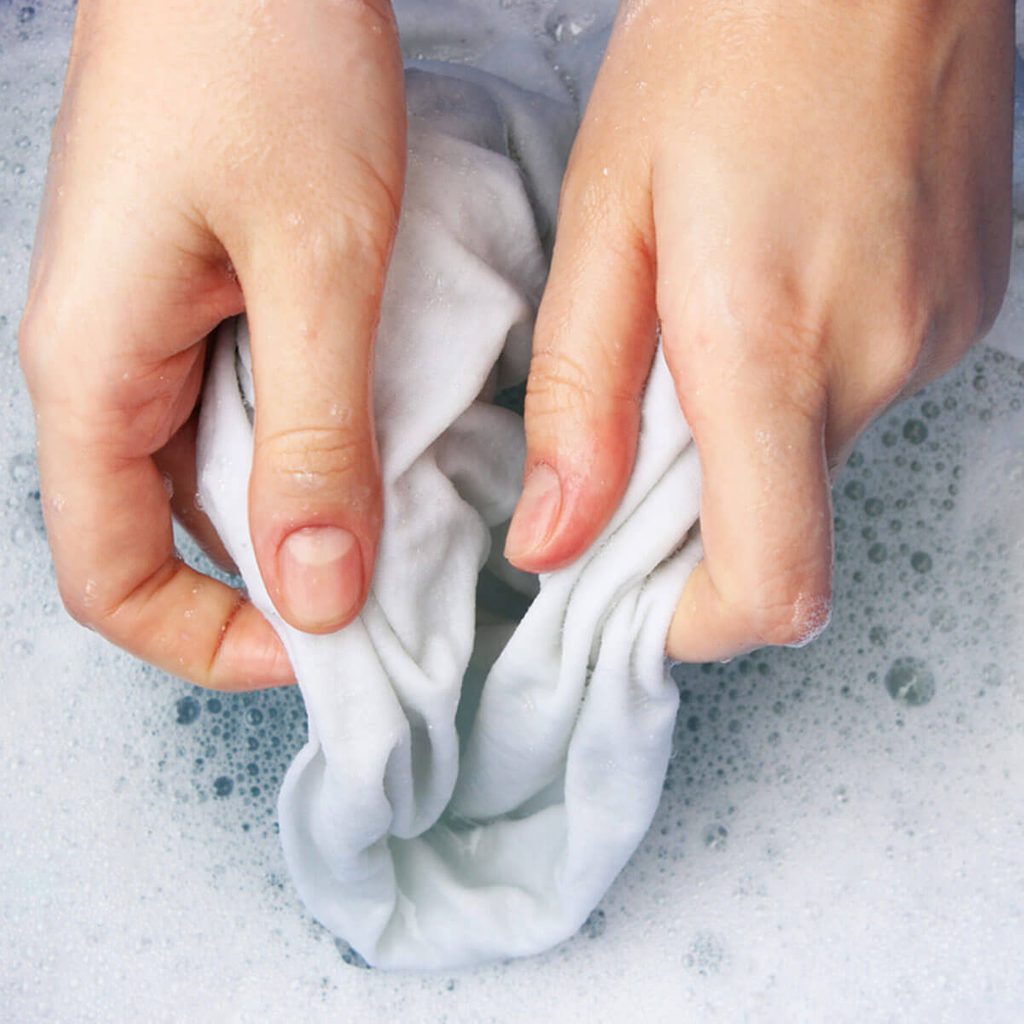
Make Your Own Green Cleaning Solution
Professional housecleaner Maggie Orth likes to make her own cleaning products. If you’re looking for cleaning hacks, here’s her recipe for an all-purpose cleaning solution, modified from a recipe she found in the book Clean House, Clean Planet by Karen Logan. In a 5-quart bucket, mix:
- 1 cup of distilled vinegar
- 3 tablespoons of borax
- 1 gallon of hot water
- 1/2 cup of soap (Orth uses Dr. Bronner’s Sal Suds)
Orth likes to add 10 or 15 drops of tea tree, lavender or lemon oil for a nice fragrance. Mix the ingredients and then pour some of the mixture into a spray bottle. Save the rest in a gallon jug. This is enough all-purpose cleaner to last for years! Use this mixture to clean tile, countertops and painted woodwork. It’s a good all-purpose cleaner, but it’s not the best for cleaning glass.

Pie Plate Dustpan
Create a quick disposable dustpan out of an aluminum pie plate. Use tin snips or heavy-duty scissors to cut the pie plate in half. Sweep up the mess and toss it in the trash!
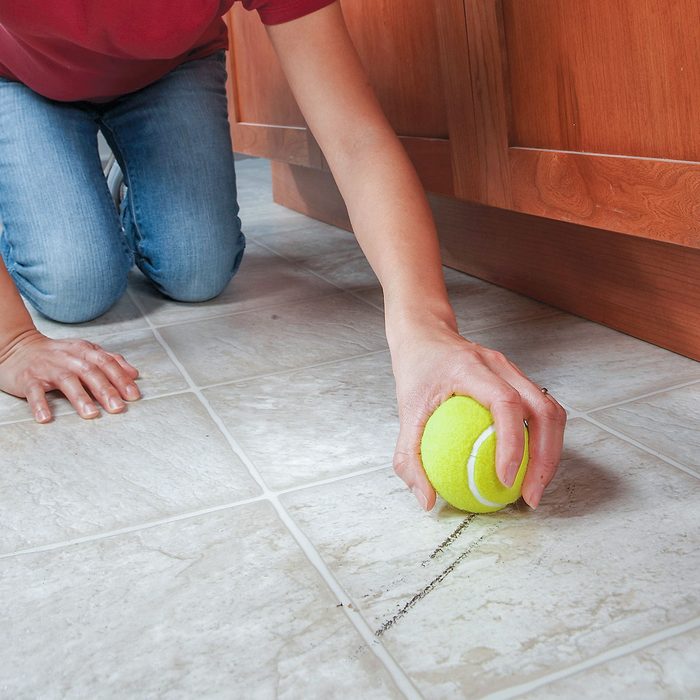
Scuff Mark Eraser
Clean off shoe scuff marks from vinyl flooring with a clean, dry tennis ball. A light rub and heel marks are ‘erased.’ No need to spring for fancy products; with cleaning hacks like this, you can most likely save yourself a trip to the store.
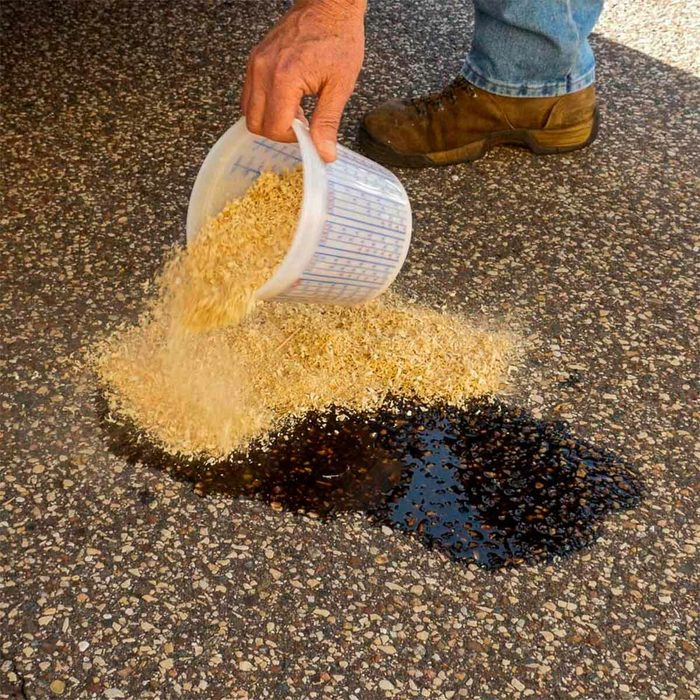
Use Sawdust to Soak Up Spills
Our cleaning hacks extend to your workshop too. Pick up used oil spills on the driveway or in the garage using sawdust. The material is readily available in most home workshops—just open up the dust-collection bags on your orbital sander, miter saw, etc. Pour sawdust over the spill, let it soak up the liquid for about 20 minutes, and then sweep it up. the bench outdoors.
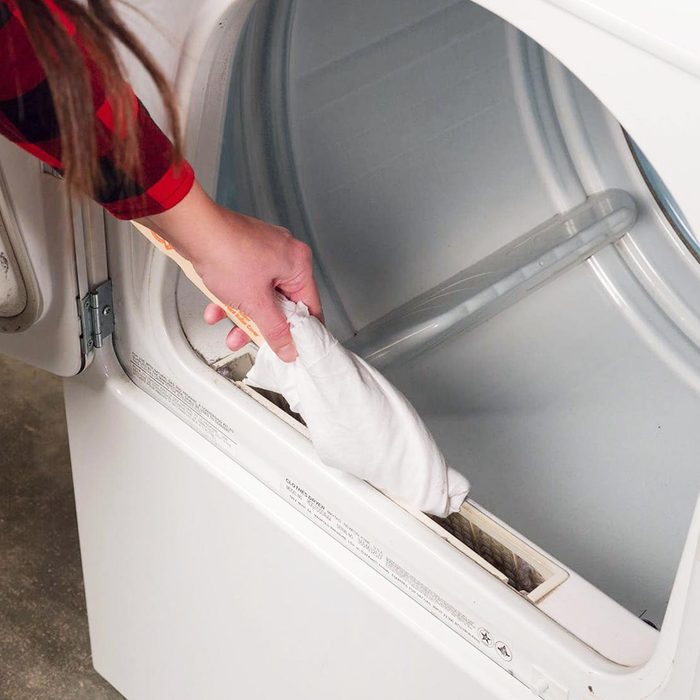
Paint Stick to Clean Lint Buildup
Once in a while it’s important to clean the area around your dryer’s lint trap, as the screen doesn’t always catch all of the debris. A paint stir stick with a clean rag wrapped around one end makes a great tool for this task.
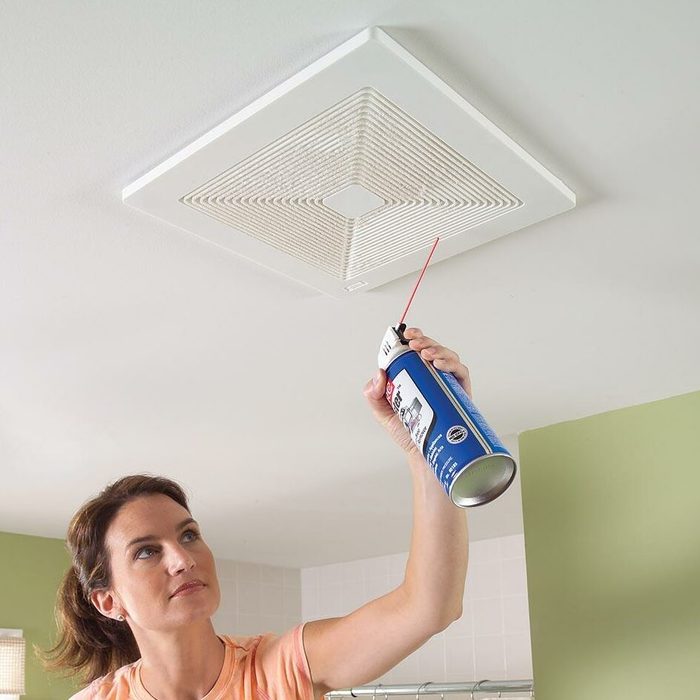
Clean the Exhaust Fan
If the grille on your bathroom exhaust fan is clogged with dust, try one of our cleaning hacks that’s faster and more effective than vacuuming. Turn on the fan and blast out the dust with “canned air.” The fan will blow the dust outside.
This works on the return air grilles of your central heating/cooling system too. Run the system so that the return airflow will carry the dust to the filter. You’ll find canned air at home centers and hardware stores, usually in the electrical supplies aisle.
Caution: The cans contain chemical propellants, not just air. Don’t let children play with them.

Dusting
Dusting should be a regular part of your cleaning routine, but cleaning hacks can make this chore go much quicker.
Dust with Your Dryer
Blankets, pillows, slipcovers, drapes and other textiles not only trap household dust, but they create it as they shed and disintegrate. Curtains and drapes, in particular, get dusty because they absorb moisture and dirt from the outside and act as a landing pad for dust from ceiling fans and air vents.
The easiest way to manage this is to buy machine-washable items and launder them twice a year. For non-machine-washable textiles, throw them in the dryer on the air-fluff setting for 20 minutes with a damp towel. The damp towel will attract pet hair, and the tumbling movement and airflow will remove the smaller particles for you.
Coffee Filters for Dusting
The next time you clean your computer monitor or TV screen, use a coffee filter. The thin, cloth-like paper catches a lot of dust and can cover a large area. You can use a coffee filter for dusting other household accessories, too.
A Pillowcase Can Be a Cleaner
You don’t want to use the pillowcase you sleep on every night, but using a spare pillowcase to clean your ceiling fans is a great way to dust the blades without sending dust flying all over.
Use Tongs to Clean Blinds
Make quick work of cleaning your window blinds by using kitchen tongs! Secure rags to the ends of the tongs with twist ties, and then clamp the tongs on each blade to clean both sides of the window blinds at once.
Renew Wood with Mineral Spirits
If the finish on your furniture or woodwork is dull and murky, it may need refinishing. But before you take on that project, take a tip from furniture restorers and clean it with mineral spirits. Mineral spirits—sometimes labeled “paint thinner”—is a gentle solvent that dissolves years of grime and residue from cleaners or polishes without harming wood finishes.
Get it at a home center or paint store. Just soak a soft cloth and keep rubbing until the cloth no longer picks up grime. Work in a well-ventilated area and remember that the fumes are flammable. Hang the cloth outdoors to dry before throwing it in the trash.
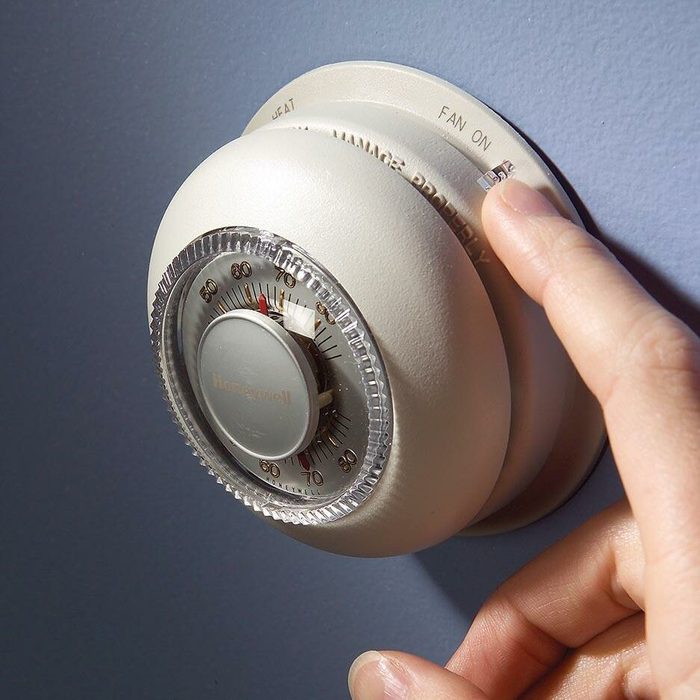
Scrub the Air
Clean air is an important part of keeping a clean home. All of our cleaning hacks here will go much farther if you’re also purifying the air.
Do Air Cleaners Reduce Dusting?
An effective air cleaner removes large and small particles from the air in a single room. Within that space, it can relieve allergy or asthma symptoms and even reduce smoke and cooking odors. But don’t expect it to relieve you of dusting duty. Air cleaners are sized to filter a small area, so only a small portion of the airborne dust in your home will ever reach the unit. For air cleaners to have a real effect on overall dust levels, you would need one unit in every room.
Clean the Air While You Clean the House
Your vacuum’s agitator brush and exhaust whip up dust that eventually settles on the surfaces you’ve just cleaned. Filter out some of that dust before it settles by switching your thermostat to ‘fan on.’ This turns on the blower inside your furnace and filters the air even while the system isn’t heating or cooling. Leave the blower on for about 15 minutes after you’re done cleaning to remove dust from air. But don’t forget to switch it back to ‘auto.’ Most blowers aren’t designed to run constantly.
Upgrade Your Furnace Filter
Your home’s forced-air heating or cooling system helps to control dust by filtering the air. A standard cheap fiberglass filter protects your furnace from large dust particles and provides maximum airflow, but it does little to reduce household dust. More expensive pleated filters usually provide a good balance between cost and filtration efficiency. These filters trap 80 to 95 percent of particles 5 microns and larger.
If you have family members with allergies, consider spending more on high-efficiency furnace filters, which capture 99 percent of airborne particles as small as 0.3 microns such as bacteria and viruses, fumes and pollen. Be aware that you’ll have to run your furnace fan full time to get the maximum benefit from a high-efficiency filter, and you’ll have to change the filter frequently to prevent damage to your furnace from the reduced airflow.
Purify the Air
Here are four things you can do to cleanse the dusty air in your home and how to remove dust from air:
- Place air purifiers in your most-used rooms to help suck up dust before it settles. Choose air purifier units with True HEPA filters rather than ionic cleaners, which release ozone, a respiratory irritant.
- Add a plant to every room. Plants naturally absorb common indoor pollutants like benzene and formaldehyde. NASA studies have shown that many plants, including aloes, palms and ferns, can absorb as much as 80 percent of the formaldehyde in a room in 24 hours.
- Keep the humidity in your house between 40 and 50 percent to help lower static electricity, which can cause dust to stick to surfaces and make them harder to clean. A humidifier and leafy indoor plants will both increase humidity levels. Just don’t increase the level to more than 50 percent. This will promote the growth of mold, a far more dangerous condition than dust. You can monitor humidity levels with a cheap hydrometer from a gardening store.
- Keep your windows closed on windy days. Dust enters through doors and windows in the form of pollen, mold spores and airborne pollutants.
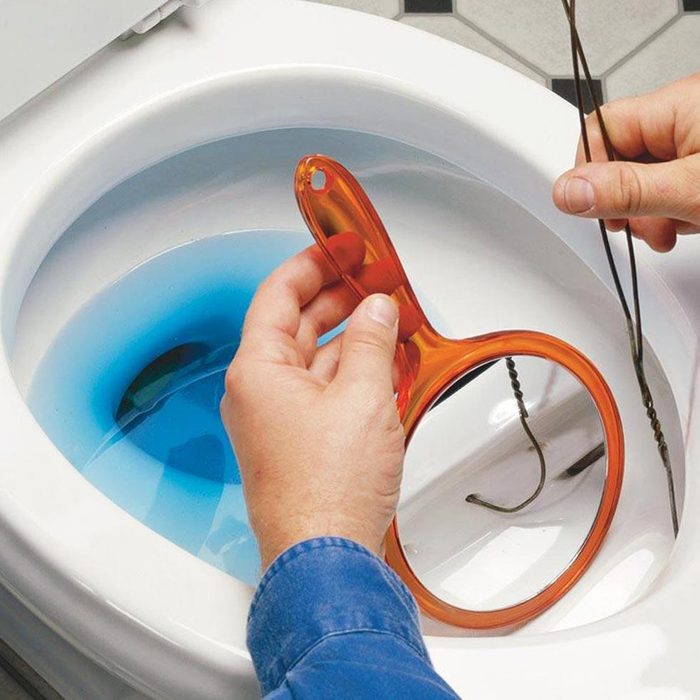
Toilet Maintenance
Your bathroom probably gets dirtiest the fastest and is the hardest to clean. So utilizing cleaning hacks to make this task go faster is an easy way to make your bathroom look more put together.
Clean the Toilet Daily
If you swish your toilet every day with your cleaning hacks brush, you’ll keep it relatively clean without a ton of hard labor. Use the water already in the toilet to swish the entire toilet bowl.
Clean a Sluggish Toilet
If your toilet flushes slowly, the rinse holes under the rim may be clogged with mineral deposits. Use a hand mirror to see the holes under the rim of the toilet. Bend a coat hanger flat and probe the tip into the holes to poke out any deposits. You can clean out those clogged holes without ever getting your hands dirty.
Install a Detachable Toilet Seat
It seems like no matter how hard you try, you can never get the hinges on the toilet seat clean. There’s always a bit of cleaning solution that seeps underneath and creeps out later. Installing a detachable toilet seat solves the problem. Then you have easy access to clean under the hinges.

Quick Tricks
Stocking up on the right soaps and having a couple cleaning hacks up your sleeve will make the job go much quicker, especially if you’re in a hurry.
Synthetic Soap Simplifies Bathroom Cleaning
In terms of chemistry, some soaps aren’t really true soap. Any soap in a liquid or gel form and some bar soaps, such as Zest and Ivory, are synthetic soap. These non-soap soaps are much less likely to form that dreaded layer of tough scum on your sink or tub and will allow you to clean house fast.
Remove Hard-Water Buildup with a Lemon
Remove hard-water buildup on your faucet with this simple, natural solution: Place half of a fresh lemon on the end of the faucet, wrap a small plastic bag around the lemon and secure it to the faucet with a rubber band. After a few hours, remove the lemon and wipe the faucet clean.
Buy a Soap Dispenser Dish Brush
According to Dana White, founder of A Slob Comes Clean, you can use a soap dispenser dish brush in your shower. “Mark it for the bathroom only with a permanent marker, and fill it with your favorite dish soap,” she says. “Hang it in the shower, and you can scrub the shower while you’re in it anyway. Dish soap does a great job cleaning the bathroom!”

Remove Bathroom Soap Scum
Soap has a nasty way of forming a hard-to-remove film on tile in tubs and showers. You won’t get rid of it by rubbing. Instead, wait for the surface to dry, then scrape off the scum with a 4-in. plastic putty knife.

Protect Your Shower Doors from Mineral Buildup
When the beads of water left on your glass shower door dry out, they leave minerals behind that are at best unsightly, and at worst can be tough as nails to remove if you let them build up. You can avoid beading water altogether by coating the glass with an auto-glass treatment.
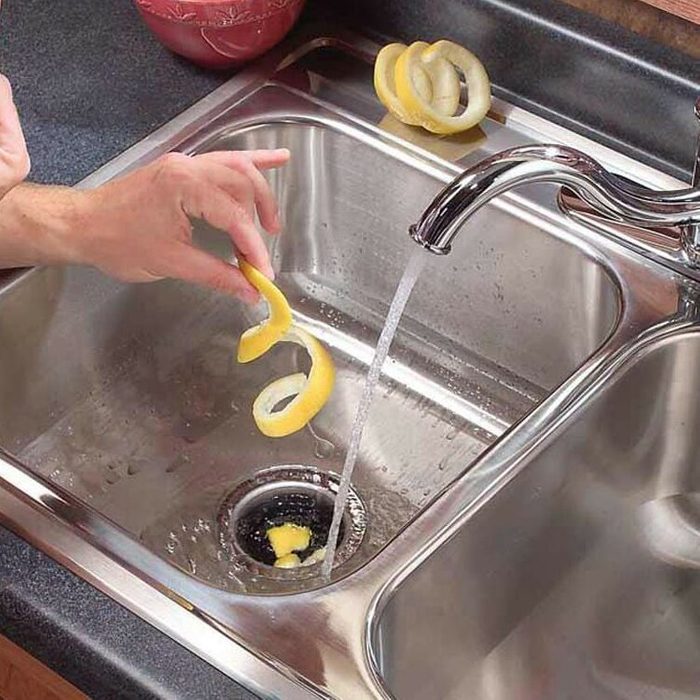
Citrus Peels and Ice Cubes for a Stinky Disposer
If your disposal stinks, it may contain bits of rotted food. Here’s how to clean them out:
- With the water running at about half throttle, drop in orange or lemon peels. Run the disposer for five seconds. Citric acid from the peels softens crusty waste and attacks smelly bacteria. Give the acid about 15 minutes to do its work.
- Turn on the water and the disposer and drop in a few ice cubes. Flying shards of ice work like a sandblaster inside the disposer.
- Run the water until the bowl is about half full. Then pull the stopper and turn on the disposer to flush it out.
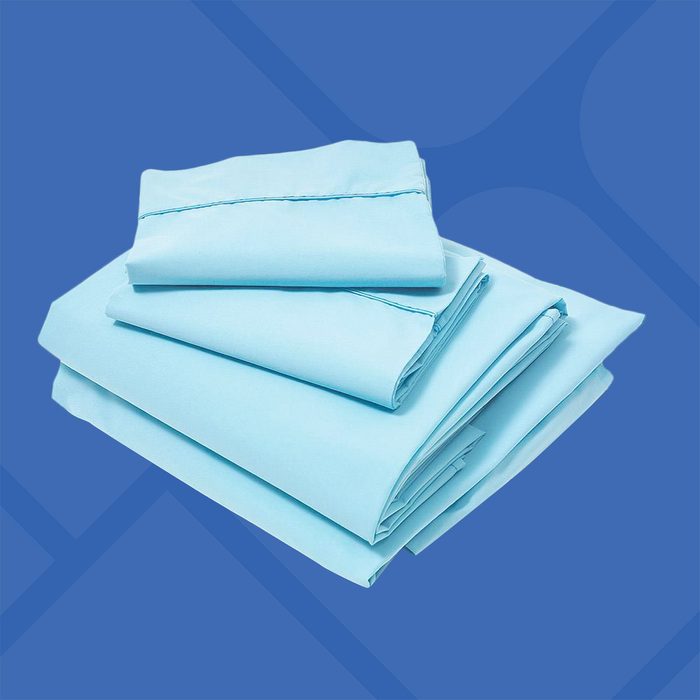
Rotate Bedding Weekly
Your cozy bed is a major dust distributor. The bedding collects skin flakes, sheds its own fibers and sends out a puff of dust every time you roll over. To minimize the fallout, wash sheets and pillowcases weekly. Items that aren’t machine washable don’t need weekly trips to the dry cleaners—just take blankets and bedspreads outside and shake them. You can spank some of the dust out of pillows, but for a thorough cleaning, wash or dry-clean them.
When you change bedding, don’t whip up a dust storm. Gently roll up the old sheets and spread out the new ones; even clean bedding sheds fibers. Washing your bedding weekly can help you identify any pests like bed bugs, too.
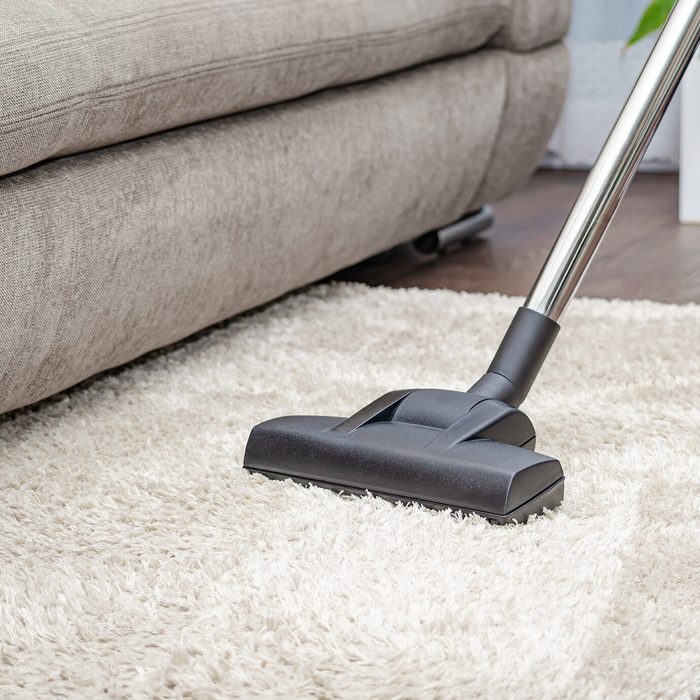
Make the Most of Your Vacuuming
The right vacuuming technique, combined with the right filters, bags and machine, has a significant impact on how much dust remains in your carpeting. Keep the following tips for how to clean dust in mind:
- Vacuum high-traffic areas twice a week and the rest of the carpeting and large area rugs at least weekly.
- Make numerous slow passes over the same area in all directions. Fast passes stir up more dust than is being sucked up.
- Use certified True High-Efficiency Particulate Air (HEPA) filters to remove invisible particles and allergens. Look for the word ‘True” on the label.
- If you have allergies, upgrade to a sealed-body bagged vacuum with an airtight ‘sealed filtration’ system that works together with a True HEPA filter. This means all of the exhaust will exit through the HEPA filter instead of leaking dust back into your house through the machine’s housing. Sealed-body vacuums have rubber seals or gaskets around the lid and filter and will last 10 to 20 years. Brands include Riccar, Miele and Sanitaire.
- Buy high-quality vacuum bags. Inexpensive 2- or 3-ply paper bags leak more dust. Higher-quality cotton-lined paper bags are better, and top-quality synthetic cotton HEPA bags are the best. Bag capacity matters too. Higher-capacity bags capture more, smaller particles that would have otherwise clogged the filter.
- Clean all your bagless vacuum filters regularly and replace them every three months.
- Turn off the agitator brush on hard flooring so you’re not blowing dust into the air.
- Maintain your vacuum: Empty the canister frequently and change bags and belts when needed. Keep the agitator brush free of hair and other material, and check the vacuum for cracks and loose hinges and get it serviced every so often to keep it running smoothly.
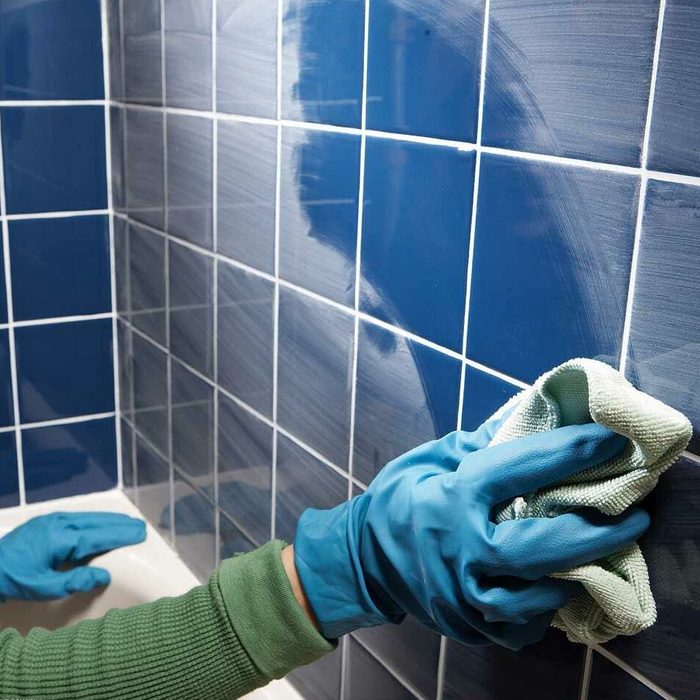
Easier Grout Haze Clean Up
Sometimes the easiest cleaning hacks come down to materials. The thousands of microscopic fabric hooks on a microfiber cloth make it perfect to cut through the dried grout haze left after a tiling project. You’ll still have to rinse and repeat, but the haze will clean up faster than it would with an ordinary rag.
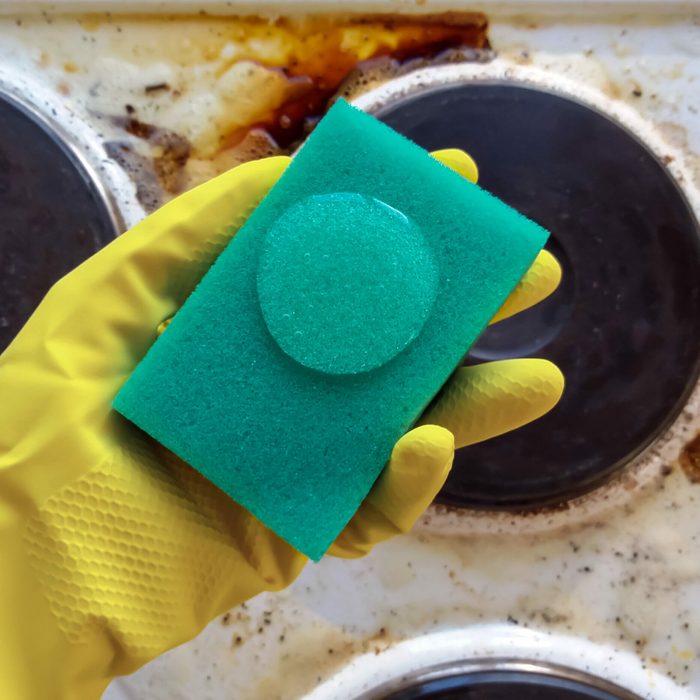
Cut Grease With a Hot Rag
Grease and dirt buildup on kitchen cabinets over time. To clean your cabinets, first heat a slightly damp sponge or cloth in the microwave for 20 to 30 seconds until it’s hot. Put on a pair of rubber gloves, spray the cabinets with an all-purpose cleaner containing orange oil, then wipe off the cleaner with the hot sponge. For stubborn spots, let the cleaner sit for five minutes first. Wipe in the direction of the wood grain. Rinse and reheat the sponge as it becomes saturated. Then wipe the cabinets with a cool, damp cloth. The orange oil leaves a shiny coating. This works for any wood or metal surface.

The Right Stuff for Rust
All-purpose cleaners won’t remove rust stains from sinks, tubs and toilets, even with a lot of elbow grease. The trick is to use a rust stain remover or a product that contains diluted hydrochloric acid. It may also be listed on product labels as hydrogen chloride, HCL or muriatic acid.
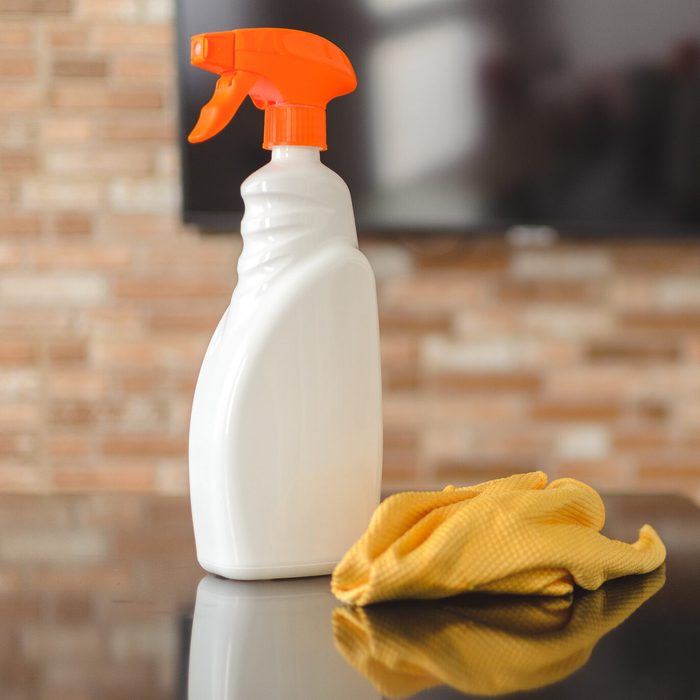
Stop Countertop Stains
If you have an older plastic laminate countertop, you’ve probably noticed that it doesn’t repel stains like it used to. That’s because years of wear have left the surface lightly scratched and porous. The best way to prevent stains is to wipe up spills immediately. But a protective coating of countertop polish can also help. Plus it will restore the shine to dull countertops. All you have to do is spray it on and wipe it off every few weeks.
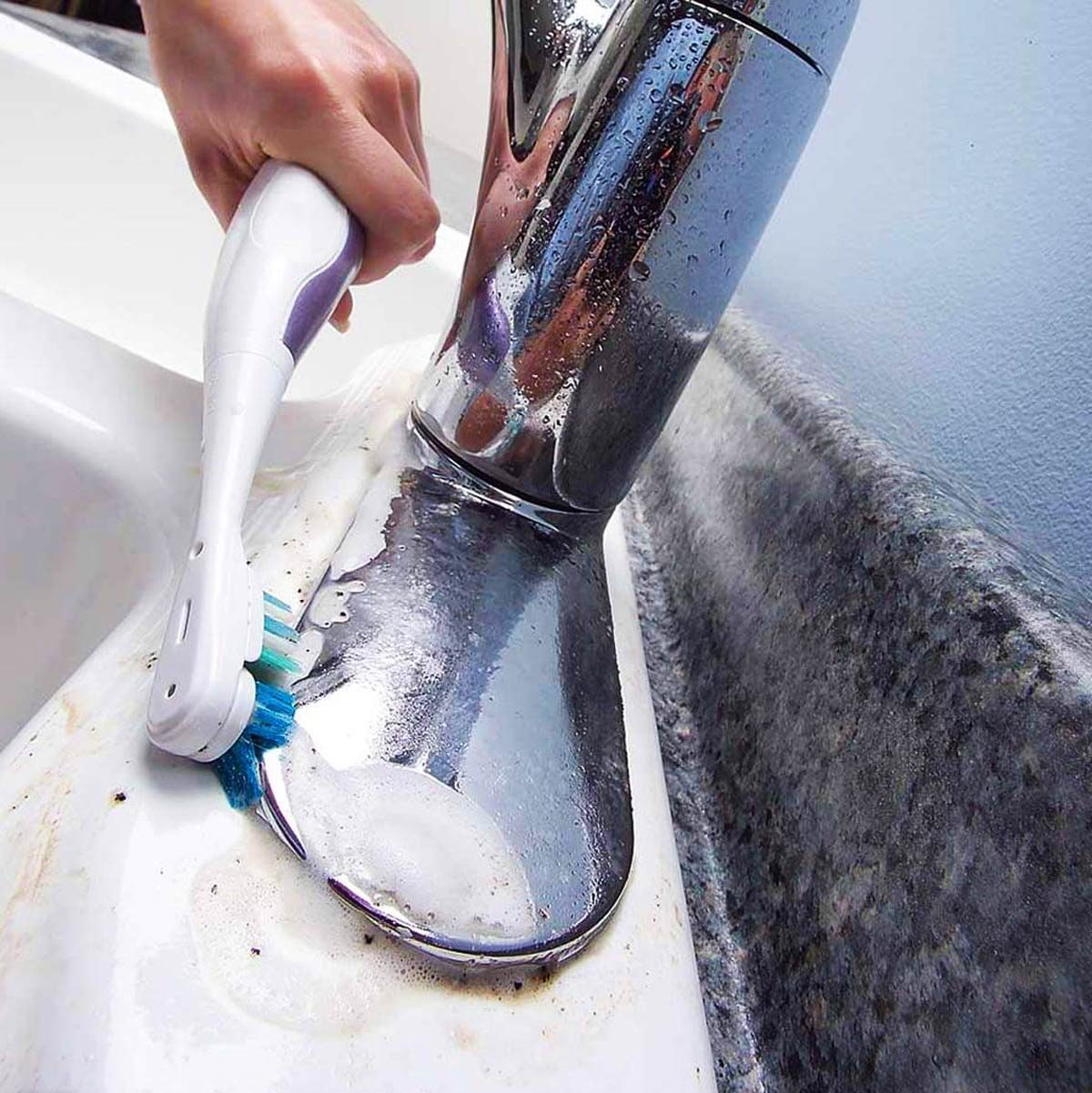
Scour Off Grime with an Electric Toothbrush
Now that discount and dollar stores carry cheap electric toothbrushes, you can add a modern twist to routine cleaning. Rapid vibration will quickly scrub out stubborn dirt, while the long handle can get to hard-to-reach places without all the elbow grease.

Burned-On Foods
Getting burnt food off cookware is no easy feat. But here’s one of our favorite cleaning hacks: put a new dryer sheet at the bottom of the dirty pan, add water and let it soak overnight. The next day, wipe out the pan and you’re good to go.
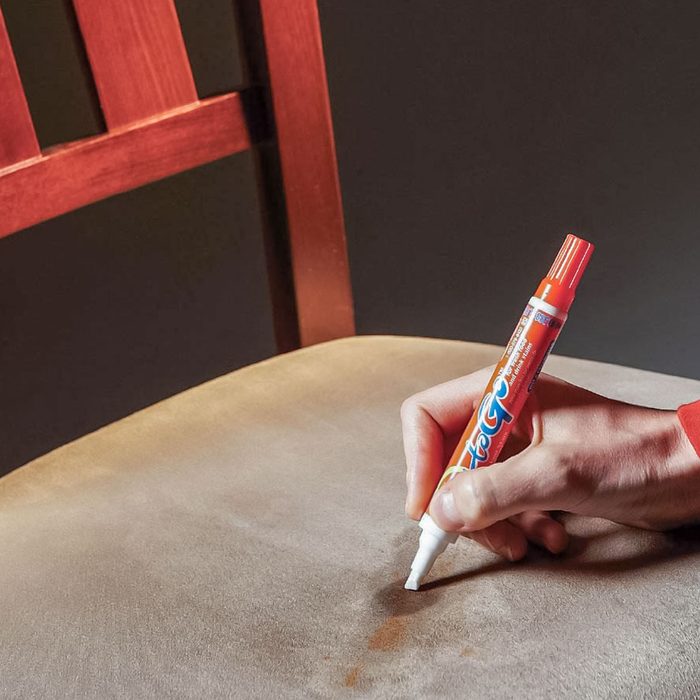
Spot-Clean Food and Drink Spills
The best way to prevent stains is to treat spills immediately. That’s why pros love stain pens which are designed to remove small stains from upholstery, grout, caulk, porcelain and clothing. Avoid the bleach pens for colored fabric.
Just press the tip into the stain to release the solution, then rub the tip across the stain to remove it. Inexpensive and portable, they’re great at removing food and drink spills. Before applying a cleaning solution to an entire surface or fixture, first test it on a tiny area to make sure it won’t damage or discolor the finish.
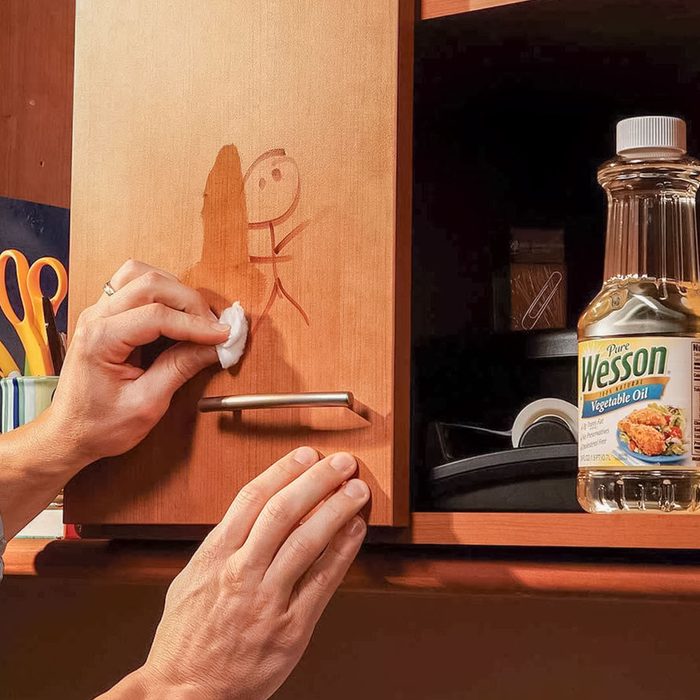
Marker Cleanup
Sometimes the best cleaning hacks are the simplest. When the permanent marker has ended up in the wrong hands, vegetable oil can clean it off
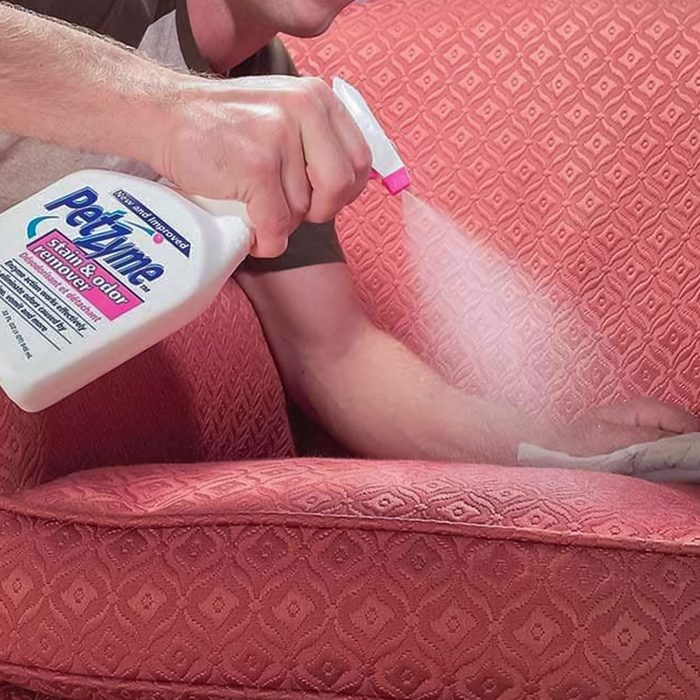
Enzymes Eliminate Pet Stains and Odors
Enzyme products are easy to use on pet stains—just spray or blot them on the stain according to the directions. The products contain harmless bacteria that ‘eat’ the organic matter that causes the odor. When the organic matter is gone, the bacteria run out of food and die. The whole process will take anywhere from a few hours to a few days. Some manufacturers recommend covering the area with plastic or a wet cloth to keep the bacteria moist and healthy.



















